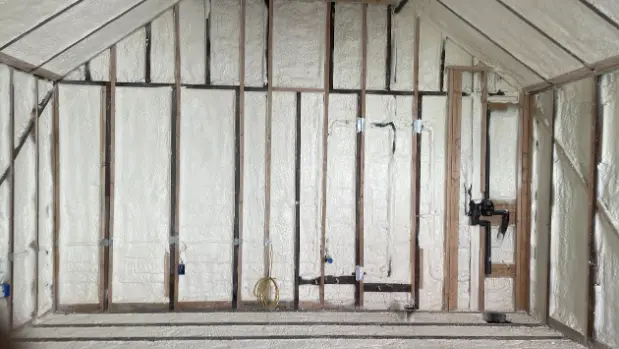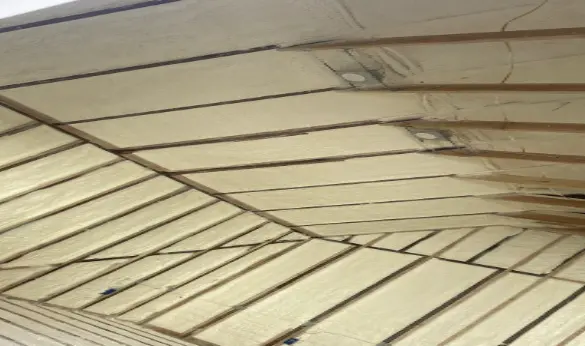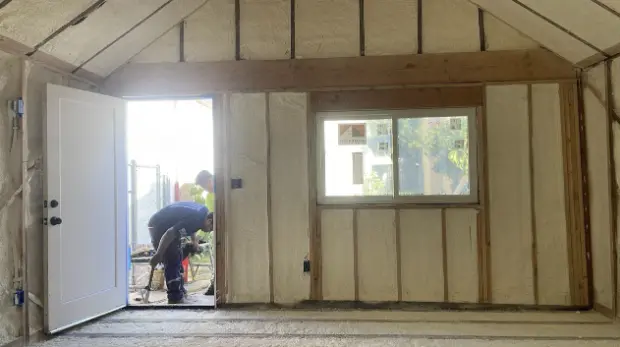San Francisco Green Building Code Requirements: Best Insulation Options
25/08/2024 5:00 PM

Key Takeaways
- San Francisco's Green Building Code mandates specific insulation standards to improve energy efficiency and reduce environmental impact.
- Proper insulation can lead to significant long-term energy savings.
- Fiberglass, cellulose, spray foam, mineral wool, and rigid foam board are among the best insulation options for meeting code requirements.
- Eco-friendly insulation materials contribute to better indoor air quality.
- USA Spray Me provides insulation solutions that comply with San Francisco's Green Building Code.
Insulation Options for Green Buildings in San Francisco

Why Insulation Matters for Your Green Building in San Francisco
San Francisco's Green Building Code (SFGBC) ensures that all buildings are healthy, sustainable places to live, work, and learn. Insulation plays a crucial role in reducing energy consumption, improving indoor air quality, and minimizing environmental impact, making it a key component in creating energy-efficient and eco-friendly buildings.
Significance of Insulation in Sustainable Building
Insulation is essential in sustainable buildings to maintain a consistent indoor temperature. This reduces the need for heating and cooling systems to work overtime, which saves you money in the long run – and you’ll also enjoy a quieter environment due to better soundproofing.
San Francisco Green Building Code Requirements
Energy Efficiency Requirements
The San Francisco Green Building Code (SFGBC) requires buildings to follow specific guidelines for insulation R-values. Higher R-values indicate better insulation performance, and the code mandates that all new buildings and major renovations achieve minimum R-values to ensure adequate thermal resistance.
- Residential ceilings: Minimum R-value of 38
- Walls (wood framing): Minimum R-value of 21
- Floors: Minimum R-value of 30
- Basement or crawlspace walls: Minimum R-value of 19
Eco-Friendly Materials and Insulation
The SFGBC emphasizes the importance of eco-friendly materials, insisting that insulation materials should have a low environmental impact. Options such as cellulose insulation, made from recycled paper, and mineral wool, made from natural rock or slag, are recommended for sustainability.
Health Impact of Insulation Materials
Different types of insulation can release harmful chemicals or fibers that affect indoor air quality. For instance, fiberglass insulation can release tiny glass fibers if not properly sealed. In contrast, cellulose and mineral wool are generally considered safer options. Choosing insulation materials free from volatile organic compounds (VOCs) and other harmful substances is important to ensure a healthy indoor environment.
Types of Insulation for Green Buildings
| Insulation Type | Forms Available | Key Benefits | Applications |
|---|---|---|---|
| Fiberglass | Batts, Rolls, Loose-fill | Fire-resistant, Moisture-resistant | Walls, Attics, Floors |
| Spray Foam | Liquid expanding | Excellent air barrier, Superior thermal resistance | Hard-to-reach areas |
| Cellulose | Loose-fill | Good thermal performance, Pest-resistant | Attics, Walls |
| Rigid Foam | Boards | High R-value, Moisture-resistant | Exterior Walls, Roofs, Foundations |
| Mineral Wool | Batts, Rolls, Loose-fill | Fire-resistant, Good soundproofing | Walls, Attics, Floors |
| Reflective Insulation | Sheets | Reflects heat, Lightweight | Attics, Roofs |
The Benefits of Insulation for Green Buildings
Insulation is crucial for green buildings and sustainable construction as it:
- Reduces energy consumption by maintaining consistent indoor temperatures.
- Lowers utility bills.
- Decreases the building's carbon footprint.
- Improves indoor air quality by reducing the infiltration of outdoor pollutants and allergens.
- Creates a healthier living or working environment.
- Enhances comfort by minimizing drafts and maintaining a stable indoor climate.
Choosing the Right Type of Green Building Insulation
Selecting the right type of insulation for your green building involves considering various factors, including the building's design, climate, and specific requirements. Each insulation type has its own advantages and is suitable for different applications.
Spray foam insulation is ideal for sealing gaps and cracks in hard-to-reach areas, while rigid foam insulation is excellent for exterior walls and foundations. Cellulose insulation is a great eco-friendly option for attics and walls.
Cost and Installation Factors
Initial Cost vs. Long-Term Savings
Spray foam insulation has a higher initial cost than fiberglass or cellulose insulation. However, its superior thermal resistance and air-sealing properties can result in substantial energy savings, offsetting the initial investment over time. Similarly, rigid foam insulation may cost more upfront but offers excellent thermal performance and durability, leading to long-term savings on energy bills and maintenance costs.
Professional Installation vs. DIY
Another factor to consider is hiring a professional installer or undertaking the insulation project yourself. Professional installation guarantees the insulation is applied correctly and meets all code requirements. This can be particularly important for complex insulation types like spray foam or rigid foam boards.
Maintenance Requirements
Materials like fiberglass and cellulose may require periodic inspection and maintenance for optimal performance. By contrast, spray foam and rigid foam insulation typically have lower maintenance needs due to their durability and resistance to moisture and pests.

Why Choose USA Spray Me for Your Green Building Insulation Project
At USA Spray Me, with over 10 years of experience, we specialize in providing specific insulation solutions that comply with the San Francisco Green Building Code. Our services include spray foam roofing for excellent thermal insulation, closed-cell Insulation known for its high R-value and moisture control, and soundproofing Insulation for noise reduction. We also offer insulation removal to ensure proper preparation for new installations and concrete leveling to prevent air leaks. Using materials from leading suppliers ensures energy efficiency, cost savings, comfort improvement, and a reduced environmental impact.
Here you'll find answers to the questions we get asked by our clients.
The best R-value for your home depends on your climate and the specific areas you are insulating. Higher R-values are generally recommended for colder climates to provide better thermal resistance. Consult with a professional to determine the optimal R-value for your needs.
While some insulation types, like fiberglass batts, can be installed by homeowners, others, like spray foam and rigid foam boards, require professional installation to ensure proper application and compliance with building codes.
Hiring a professional can ensure that your insulation is installed correctly and performs optimally.
Proper insulation reduces the need for heating and cooling systems to work overtime, leading to lower energy bills and a smaller carbon footprint.
By maintaining consistent indoor temperatures, insulation helps create a more comfortable living or working environment.
USA Spray Me provides top-quality insulation services that comply with the San Francisco Green Building Code. We offer comprehensive support throughout the project, from initial consultation to installation and maintenance - get in touch today to discuss your project and see if we’re a good fit!
